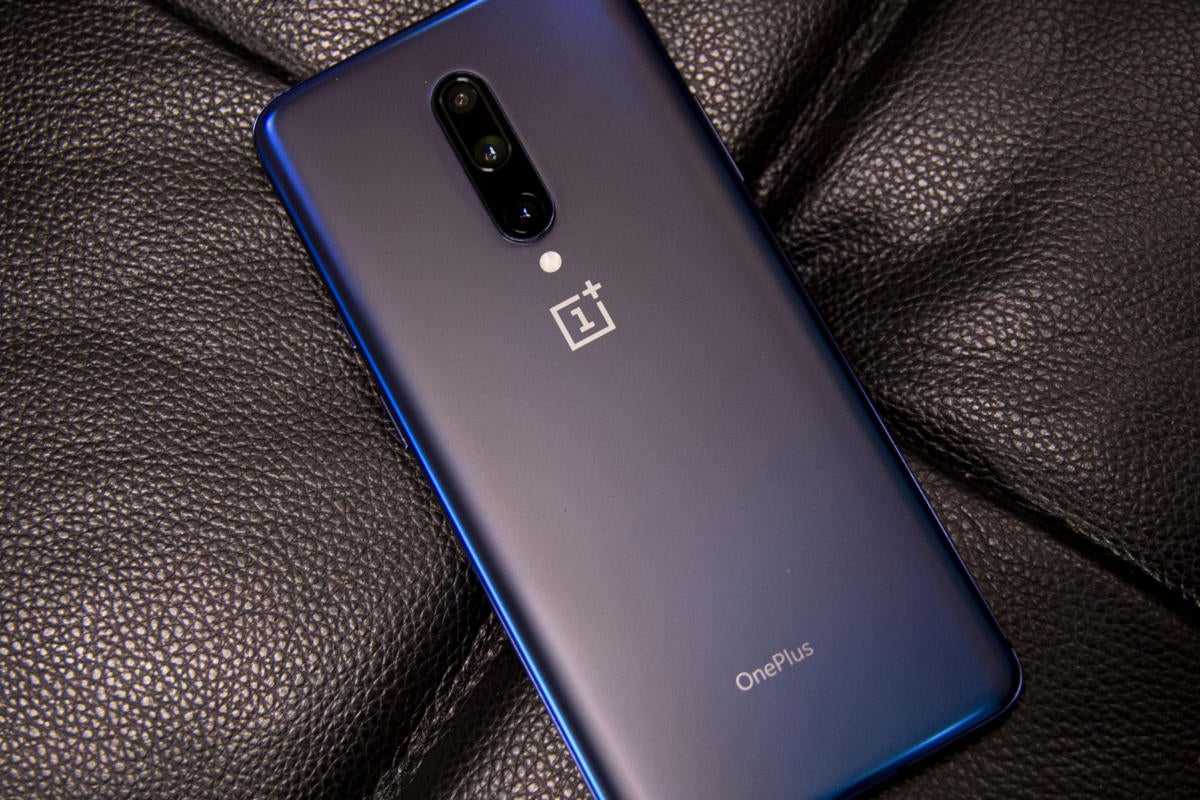While Google and Apple are working to deliver typing prompts and custom profile photos in their message apps, OnePlus is beefing up its own messaging app in a different way: with a healthy dose of AI-powered organization.
On the OnePlus 7 and 7 Pro, the upcoming OnePlus 7T, and coming soon to older handsets, OnePlus’s stock Messages app will gain a “Smart SMS” feature. No longer will your messages merely populate your phone in chronological order, cluttered with bill reminders, payment notifications, and one-time passwords. Texts from businesses will clearly be separate from the ones your friends send, all sorted automatically based on content. The system went live in India Thursday, with expansion planned for additional countries, including the United States.
It’s similar to how Google’s Gmail works, and very much a why-didn’t-someone-think-of-this-sooner feature you’d normally expect from Google or another tech juggernaut. Instead, OnePlus has partnered with an AI company named Gupshup to deliver this upgrade. Gupshup CEO Beerud Sheth says it’s been a long time coming. “When you think about the enterprise messaging experience today, it essentially hasn’t changed for 20 years,” Sheth pointed out.
Cutting down on the clutter
Instead of a simple chronological list of your conversations, OnePlus Messages will feature three folders at the top of the screen: Promotional, Transactional, and OTP (one-time passwords). As messages come in, they’ll be sorted appropriately, just like Gmail’s Primary, Social, and Promotions tabs. That means messages from your bank and credit card company will land in Transactional, 2FA codes will end up in OTP, and deals and sales from stores will go straight to Promotional.
 Gupshup
GupshupThe OnePlus messaging app will use on-device AI to automatically sort non-personal messages into folders.
Here’s how it works: When a message comes in, the AI engine scans It for certain keywords and structure and assigns it a category. Personal messages will be ignored and reside on the main screen like usual, but text from businesses will be sorted into the appropriate folder. Sheth estimated that 50-60 percent of incoming messages will be sorted under the new system.
As the AI engine categorizes messages, it also extracts key information, such as flight numbers and 2FA codes, and highlights the info in a Google Now-style card view. You can easily see and copy the relevant information without needing to open the entire message. Sheth said the AI engine is able to discern marketing language from your friends’ chatter, even when businesses try to sound conversational. He also hopes to work with businesses to generate unique looks for the cards.
The new features won’t be optional, and folders can’t be customized or deleted, though as always you can opt for a different Android messaging app. But if you’re the kind of person who fanatically deletes unwanted messages, you may want to give it a try.
Privacy takes precedence
I know what you’re thinking: The last thing you want is for someone to be able to read your texts. Sheth stressed numerous times that the AI software works entirely on the device, and neither OnePlus nor Gupshup will see or store any messages. Privacy was paramount in developing the system, Sheth said, which is part of the reason why the model is limited to so-called enterprise messages. “There is no user data that goes from the device to the server,” Sheth said. “All computations happen on the device.”
 Christopher Hebert/IDG
Christopher Hebert/IDGGupshup will be able to update the AI inside the Messages app separate from OnePlus’s regular updates.
While the AI software runs on the phone, however, there isn’t a machine learning aspect to it, at least not on the individual’s phone. Rather, Sheth said the intelligence will be tweaked, improved, and analyzed behind the scenes and pushed to phones via background updates separate from OnePlus app and system updates. Sheth didn’t give a firm schedule for when those updates would arrive (though he didn’t rule out monthly updates), but he did give a peek into how it’ll improve. Along with a team of engineers, Gupshup is working with a group of paid users who have agreed to share their inboxes and sample messages to help train the AI.
As for when the system will expand beyond India, Sheth didn’t make any promises. In fact, Smart SMS was originally supposed to launch in June but was delayed due to issues with the AI. As Sheth explains, each country requires a whole new training for the AI, which inevitably presents new problems that need to be solved. For example,. he explained, every time you swipe a credit card in India you get a notification, but in the U.S. that doesn’t happen. “It’s stuff like that we need to train for.
Because message sorting is done entirely on the device, Sheth isn’t concerned about whether Verizon, AT&T, or other carriers will get in the way. “Our only interaction is with the handset makers,” Sheth said. “I would expect the carriers to be happy with the outcome.”
Gupshup isn’t sure whether the public or the AI is ready to expand to personal or MMS messages. He said that it could expand to other “high-frequency use cases,” but it would take far greater training models. For now, Sheth merely wants to clear out the junk so your message list is cleaner.
“Your messaging app now is just a list of text messages,” he said. “Now it will appear as a list of cards for each of the things that you’re doing, and it makes it much easier and convenient to use.”
This story, “How OnePlus phones will smartly sort your texts using on-device AI” was originally published by